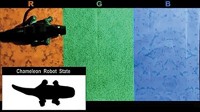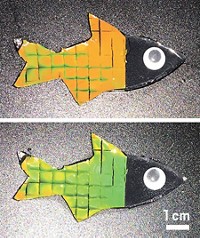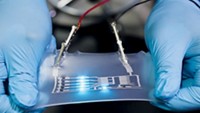Advertisement
Grab your lab coat. Let's get started
Welcome!
Welcome!
Create an account below to get 6 C&EN articles per month, receive newsletters and more - all free.
It seems this is your first time logging in online. Please enter the following information to continue.
As an ACS member you automatically get access to this site. All we need is few more details to create your reading experience.
Not you? Sign in with a different account.
Not you? Sign in with a different account.
ERROR 1
ERROR 1
ERROR 2
ERROR 2
ERROR 2
ERROR 2
ERROR 2
Password and Confirm password must match.
If you have an ACS member number, please enter it here so we can link this account to your membership. (optional)
ERROR 2
ACS values your privacy. By submitting your information, you are gaining access to C&EN and subscribing to our weekly newsletter. We use the information you provide to make your reading experience better, and we will never sell your data to third party members.
Materials
This color will self-destruct
Liquid microcrystal arrays track temperature with irreversible color change
by Bethany Halford
May 31, 2023
| A version of this story appeared in
Volume 101, Issue 18

Messenger RNA vaccines for COVID-19 must be stored at subzero temperatures to remain effective over their full lifetimes. But how can a pharmacist ensure that a particular vial of vaccine hasn’t warmed up and then been re-cooled? New labels that irreversibly change color from green or red to colorless could be used to signal when vaccines, as well as medicines and organs, have been exposed to degrading temperatures.
Scientists led by Yadong Yin at the University of California, Riverside, and Xuemin Du at the Shenzhen Institute of Advanced Technology developed the labels, which use self-destructing liquid microcrystal arrays to produce the color-changing phenomenon. The labels have a layer of liquid colloidal photonic crystals to produce structural color—hues that arise from reflecting certain wavelengths of light rather than dye molecules. That layer is topped with a layer of triggering agent, like polyethylene glycol, which can be tuned to melt at a particular temperature. When the triggering agent melts, it seeps into the liquid microcrystal array, breaking the crystals up and destroying the color (ACS Nano 2023, DOI: 10.1021/acsnano.3c00467).
There are other methods for tracking temperature variations, but these rely on electronics, which can be tampered with, or materials that don’t work at subzero temperatures. The scientists say that these structural color liquids could also find use in wearable sensors and photonic displays.





Join the conversation
Contact the reporter
Submit a Letter to the Editor for publication
Engage with us on Twitter